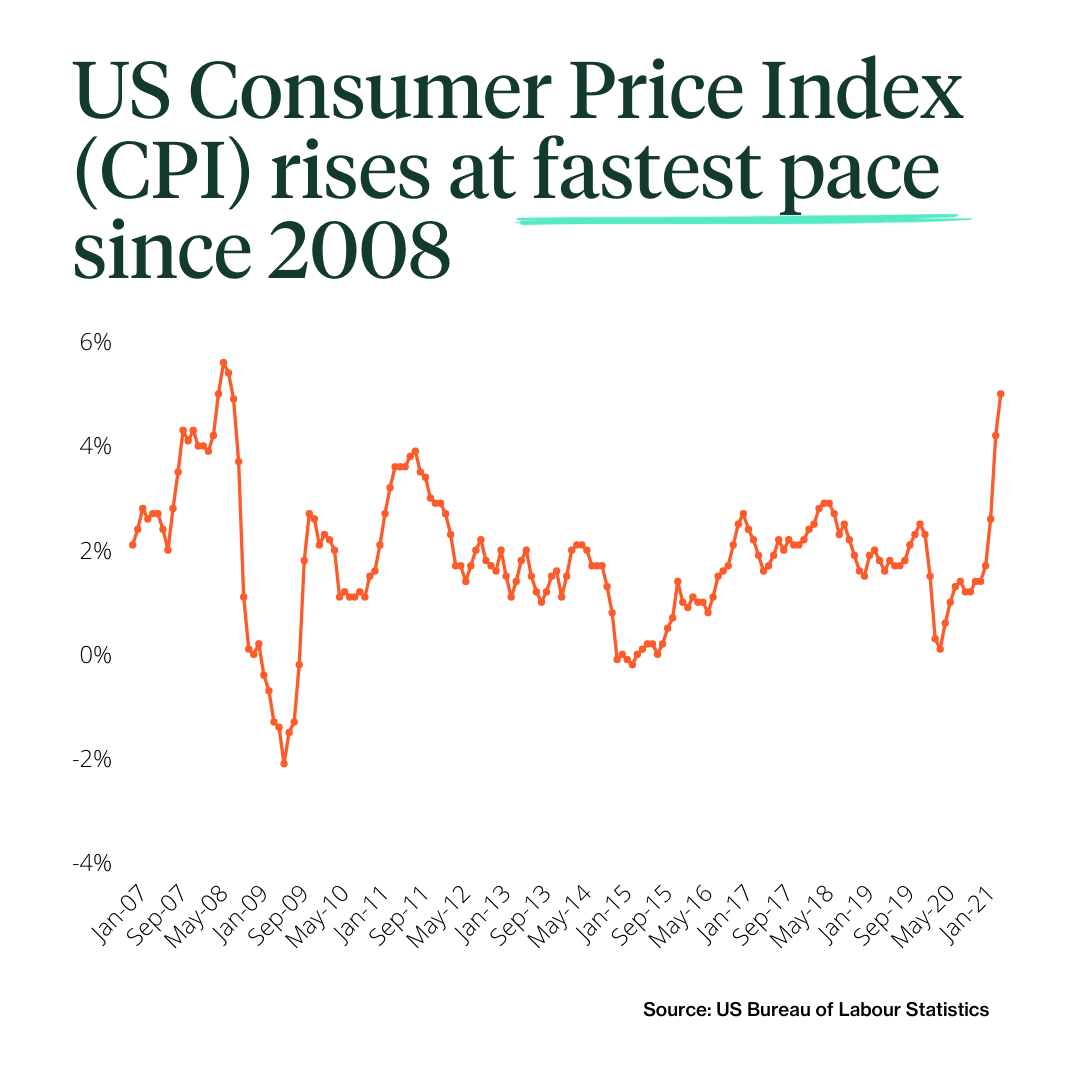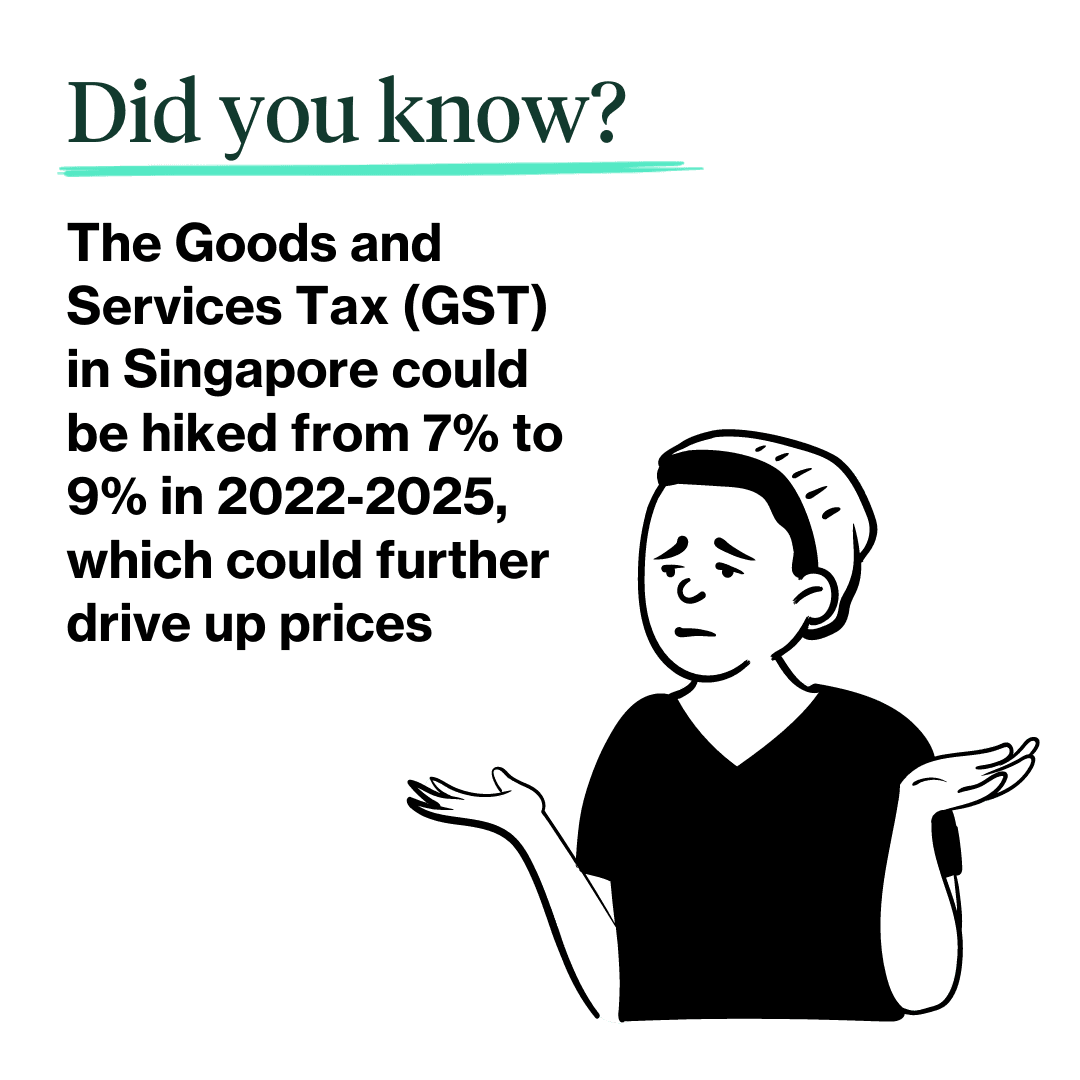A red hot economic recovery is fueling inflation. Here’s how to hedge your portfolio
By Beansprout • 17 Jun 2021 • 0 min read
Prices for many items from petrol to electricity have gone up. To hedge against inflation, we could own assets that have limited supply like gold and commodities.

In this article
TL;DR
- Prices for many goods from oil to lumber have gone up as recovery from the Covid-19 pandemic has led to rising demand when supply chains are still being disrupted.
- Central banks may remove support earlier than expected to prevent overheating if high inflation is sustained. This could lead to a correction in stock markets.
- To hedge against inflation, investors could own assets that have limited supply like gold and commodities.
What’s going on here?
I was having dinner with a few friends (heightened alert compliant), and the issue of rising prices was brought up several times as it has started to hit our pockets. The car owners amongst us would be feeling the pinch as the pump price of the 95-Octane petrol has increased to close to S$2.40, exceeding prices seen early last year. More Electronic Road Pricing (ERP) gantries are being activated as more Singaporeans head back to work. COE prices of motorbikes have recently hit an all-time high. And this is even before an impending GST hike expected sometime in the next few years!
The recovery from the Covid-19 pandemic has brought with it rising demand for goods at a time when supply chains are still being disrupted, leading to higher prices for many products we consume on a daily basis. In the US, the consumer price index (CPI) which measures the price of a basket of good for the average consumer, rose by 5% YoY in May, the fastest pace of increase since 2008. This has also prompted Warren Buffet to say that he is seeing “significant inflation” in Berkshire Hathaway’s recent AGM.
Higher inflation is a concern for us as it lowers the purchasing power of our money. For every $100 of savings that we have, we can purchase less goods and services. As a Smart Bean, we are also constantly on the lookout for ways to improve our financial wellness by investing wisely. This would mean looking at ways to ensure our portfolio is positioned for higher inflation so that we can continue to afford the lifestyle that we aspire.

What does this mean?
Investors have seen higher asset prices in the past year as significant support provided by Central Banks globally has injected liquidity in the market. Higher inflation could lead to a correction in the stock market as Central bank support is removed to prevent overheating of the economy. This is one of the reasons why inflation is now so closely watched!
While inflation across the world has exceeded expectations in the past few months, the key debate is whether the higher prices that we see now is “transitory” or not. According to the US Federal Reserve, there is no need to worry about inflation currently as it is likely to be short-lived. This is due to supply chain issues as many countries are only gradually re-opening, and are evident across a number of areas like a global semiconductor chip shortage and lack of workers to harvest agricultural commodities like palm oil.
On the other hand, demand recovery is expected to pick up pace as more and more countries exit from lockdown. The US economy is expected to grow at close to 6.5% this year, the fastest pace in close to 40 years. This is even before factoring in a massive infrastructure spending plan that could cost close to $1 trillion! If prices continue to climb in the coming months, this might cause greater concerns that inflation is really here to stay.

What would Beansprout do?
If investors are concerned about inflation, they should own assets in their portfolios that would enable them to hedge against higher prices. This would be asset classes that have limited supply as a higher demand for these assets would drive higher prices as well.
- Gold – Gold has been seen as an inflation hedge for decades as its supply cannot be increased within a short span of time. ETFs that offer exposure to gold include GLD or GDX. For those looking at silver as an alternative to gold, ETFs that offer exposure are SLV and SIL.
- Commodities – From oil to copper to palm oil, the prices of many commodities are now close to multi-year highs. ETFs that offer exposure to oil are USO, while ETFs like DBC offer broader commodities exposure.
- Cryptocurrencies – One of the key attributes of Bitcoin is its limited supply of 21,000, which has led to it also being known by some as “digital gold”.
What to avoid? For those concerned about higher inflation, growth stocks including those in the tech sector should be avoided as inflation concerns might cause faster than expected withdrawal of monetary support, driving up interest rates and leading to lower valuation of growth stocks.
Read also: Why we are worried about persistent inflation
How are you being affected by inflation and what are you doing to protect your portfolio? Share with us your views below!
This article was first published on 17 June 2021 .
Read also
Gain financial insights in minutes
Subscribe to our free weekly newsletter for more insights to grow your wealth
0 comments